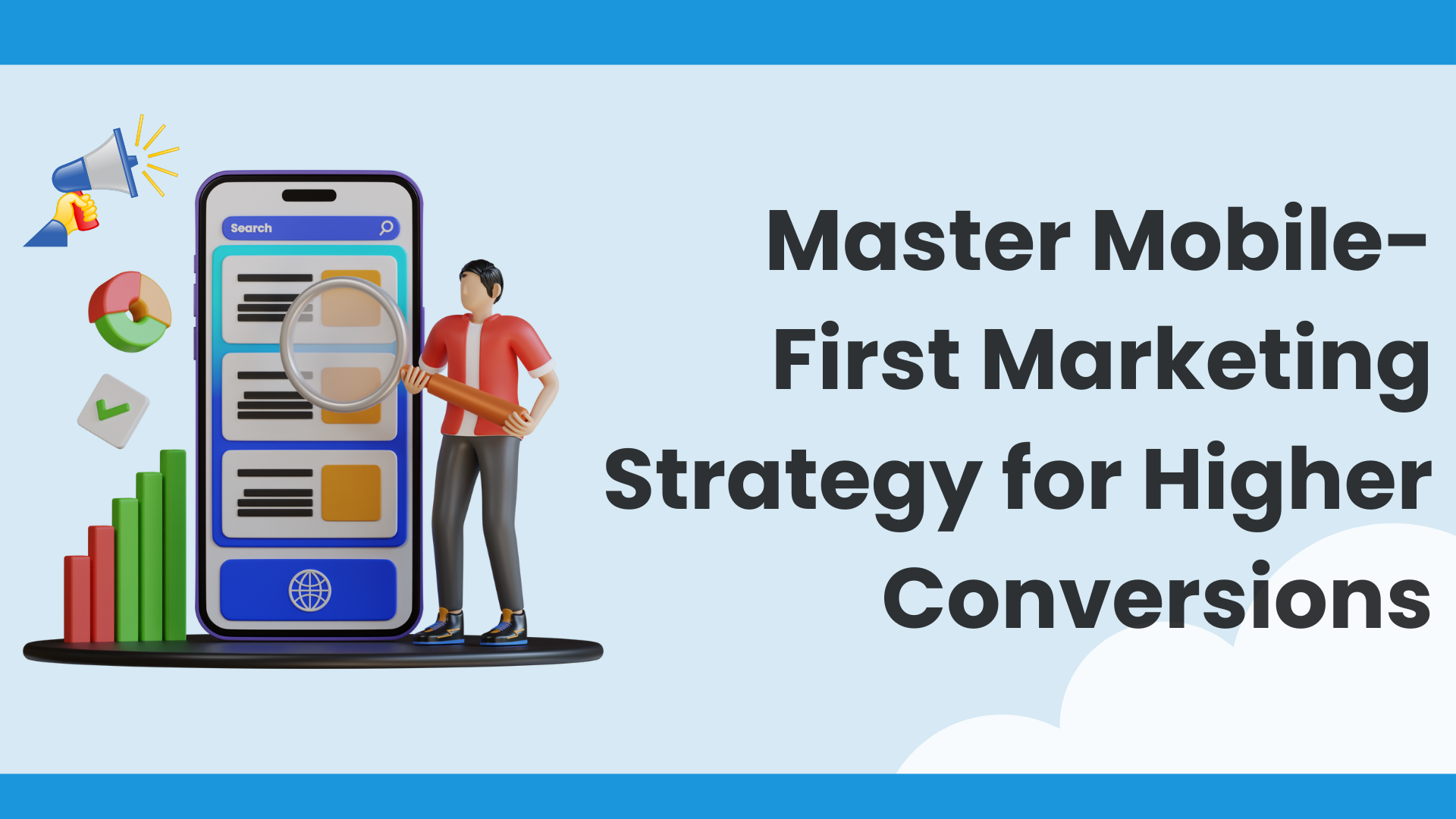If you compare traffic sources, there’s a good chance that you’ll notice an uptick in mobile devices year-over-year. It’s no surprise, given the fact that mobile devices are becoming the go-to tool for googling something, sharing on social media, or pretty much anything else done on the spot. With this knowledge, developing a mobile-first marketing strategy isn’t something to toss on the back burner – it’s a must have. As of 2024, over half of global website traffic has come from a mobile device, a trend that grows continuously as smartphones become increasingly available and essential to our daily lives.
Understanding the Mobile-First Imperative
Mobile-first marketing is exactly what it sounds like – an approach where the design and development of your marketing strategy puts mobile devices first. This philosophy tends to be backed by data suggesting users prefer to use mobile devices to access the internet. For example, a study by Statista shows that by 2025 nearly 75% of internet users will access the internet solely via their smartphones. Picture your family—out of four people, only one will be using a desktop by then.
Key Elements of a Mobile-First Marketing Strategy
- Responsive Design: A responsive design is the first step in having an effective mobile-first strategy. It allows your website (and digital assets) to adjust to fit the screen of whatever phone your visitor is using. Google's algorithms prioritize mobile-friendly sites in search rankings, making responsive design not just a user experience necessity but also a critical component of SEO.
- Speed Optimization: When using their phones, users are expecting fast-loading pages and page elements. Some research suggests that 53% of mobile users tend to leave a site if it takes longer than three seconds to load. If that doesn’t put your CRO into high-gear, we don’t know what will. Try techniques such as image compression, utilizing browser caching, and minimizing code to improve these load times.
- Simplified Navigation: Now faced with a smaller screen (it’s their own fault, haha), there has to be a more intuitive and straightforward navigation system on your website. Push the most important information to where it needs to be, minimize clicks needed to gain access to specific pieces of information, and use clear menus.
- Mobile-Friendly Content: This should go without any argument… We’re focusing on mobile, so all of the content associated with this push should be mobile-friendly. Content should be designed for easy consumption on mobile devices. This includes shorter paragraphs, bullet points here and there, and headings that are easier for scanning.
- Location-Based Marketing: Given the nature of mobile devices, they tend to be more location-aware. You know that annoying iPhone notification that’s always asking about if you want to share your location with an app or not? Yeah… However, this provides marketing teams with a unique opportunity to boost location-based marketing. This can include personalized offers, local SEO optimizations, and geo-targeted ads that reach users in specific locations. Data from Factual shows that location-based ads perform 20% better than traditional ads – so we know what our next move is…
- Mobile Advertising: Mobile ads give us a pretty decent amount of room to work with in terms of formats such as in-app ads, mobile search ads, and social media ads. Mobile ad spending is projected to reach $290Bn globally by 2024, reflecting its growing importance. Tailoring ad content to mobile users will allow you to boost engagement and conversion rates.
The Impact of Mobile-First Strategies on Conversion Rates
Let’s start with the facts… According to Adobe, companies with mobile-optimized sites triple their chances of increasing mobile conversion rates to 5% or above. Also, mobile-optimized emails tend to have 15% higher click-to-open rates compared to those not optimized for mobile. So, what does this tell us? Businesses that implement a mobile-first approach tend to see higher engagement and higher conversion rates.
Challenges and Considerations
Yeah, we know, this all sounds great. However, this all comes with its own set of challenges. The diversity of mobile devices, different operating systems, and screen sizes can complicate the development and design efforts. Additionally, there’s a need for faster load times and simplified content which can limit your current work as well as future creativity.
There also has to be a holistic approach with mobile-first marketing. Mobile is dominant, but it’s also important to take into account the user experience of those using a laptop, desktop, or tablet. An effective strategy will take into account the mobile-first principles and also take into account an omnichannel approach.
Takeaways
While mobile continues to dominate the digital landscape for marketing, we have to continuously refine our strategy to remain competitive and relevant. By prioritizing design, page speeds, mobile-friendly content, and leveraging mobile-specific tools and tactics, businesses can create an engaging and effective mobile experience that drives conversions.
Keep in mind that the mobile approach to marketing isn’t just about the trends; it’s about aligning with how the majority of consumers behave with digital content today and preparing for the future of continued behavior.





Leave a Comment